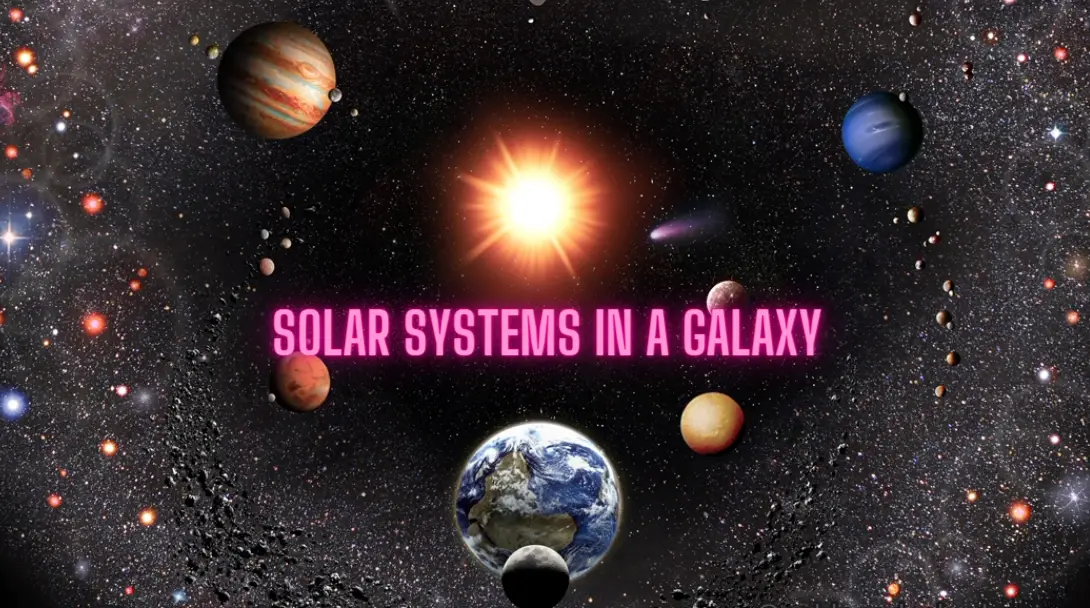Introduction
The immensity that is the universe is awe-inspiring; it is full of innumerable galaxies, each of which contains billions upon billions of stars. Solar systems, which are groups of planets, moons, asteroids, and other celestial bodies rotating around a central star, are one of the many amazing phenomena that may be observed inside of these galaxies. The Milky Way, the galaxy in which we live, is home to an incredible variety of solar systems, each of which offers distinctive insights into the processes by which planets are formed and the possibilities for life on other worlds. In this piece, we will take a trip throughout the cosmos to investigate the fascinating variety of solar systems that exist.
1. The Classification of Stars and the Habitable Zones Around Them
Solar systems are usually identified by their primary star, which plays a role in the development of its planets as well as the features they possess. Stars are categorized according to their size, temperature, and the amount of light that they emit. The main-sequence star, which is the type of star that our sun is, is the most common type of star in our galaxy. Main-sequence stars offer a consistent environment in which planetary systems can form. The region surrounding a star that has conditions favorable enough to allow for the development of liquid water, which is a necessary component for life as we know it, is referred to as the habitable zone. This region is also referred to as the Goldilocks zone.
2. The Varieties of Life on Planet Earth
There is an incredible variety of planetary arrangements that may be found in solar systems. There are some star systems that only have one planet in orbit around their star, while others have several planets in intricate and ever-changing configurations. We have found gas giants similar to Jupiter, rocky planets similar to Earth, and even exoplanets with unusual chemical make-ups or harsh environments. These incredibly varied planets can teach us a lot about how our own solar system came to be and how it has developed over time.
3. Extrasolar Planets and the Quest for Life on Other Worlds
The study of exoplanets, or planets that orbit stars outside of our solar system, is quickly becoming one of the most fascinating subfields within the field of astronomy. Astronomers have been able to find and characterize thousands of exoplanets thanks to advancements in both telescope technology and detection procedures. Among these, we have found worlds that have characteristics favorable for the existence of liquid water and, possibly, life. These are known as potentially habitable exoplanets. These discoveries pique our interest in the likelihood of finding life elsewhere in the universe and inspire us to conduct additional research.
4. The formation of planets and their migration
Nebulae are extremely large clouds of gas and dust that are the progenitors of solar systems. The gravitational forces that are present in these nurseries are responsible for the beginning stages of the creation of stars and planets. Migration is a process in which planets alter their places within the system as a result of the delicate dance that planets engage in when they are forming. These movements have the potential to have major consequences on the architecture and stability of a solar system, which can have an effect on the presence of habitable zones and the distribution of different types of planets.
5. Some Extraordinary Solar Systems:
Some solar systems defy our expectations and reveal intriguing peculiarities, whereas the majority of solar systems display ordered structures. Planets that orbit within binary star systems, which are made up of two stars that orbit around one other, can have their own distinct set of dynamics. Planets that orbit pulsars, which are neutron stars that rotate very quickly, present a challenge to our knowledge of how planets may survive in extremely harsh environments. Our knowledge of the possible diversity and resiliency of planetary systems across the galaxy is expanded as a result of the discovery of these remarkable systems.
Conclusion
Solar systems are intriguing microcosms that can be found within the expansiveness of our galaxy as a whole. Each system provides a window into the processes that are shaping the universe, from the moment it was formed all the way to the possibility of life existing inside it. The more we look into the cosmos and find new solar systems to examine, the more we learn about the universe as a whole and where we fit into it. We can uncover the mysteries of planetary formation, the potential for worlds that are livable, and the intriguing possibility of finding life on other planets in the galaxy by conducting research on the enormous variety of solar systems that may be found throughout the galaxy.
![]()
